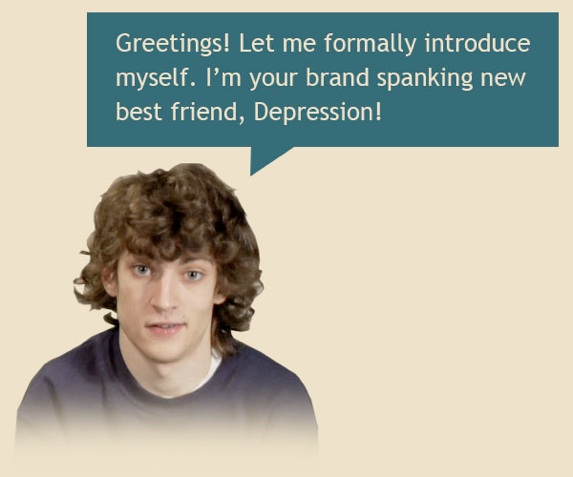Latest Public Service Radio Minute
Anxiety From Political News and Social MediaAnxiety From Political News and Social Media, MP3, 2.4MB
Listen to or download all our PSAsSupport Our Work
Please donate so we can continue our work to reduce the stigma of psychiatric illness, encourage research, and support educational activities for behavioral health professionals and the public. Ways you can donate and help are on our Support and Donations page. Thank you!
More InfoLatest News Around the Web
Report Discusses Potential Risks Of Social Media For Healthcare.
Modern Healthcare (1/20, Conn, Subscription Publication) writes, “A report from the not-for-profit ECRI Institute, a patient-safety and quality-improvement organization, details social media’s potential as a public-engagement tool for healthcare organizations but warns that risk management is necessary.”
Researchers “found that 41% of roughly 23,000 respondents reported using social media to research healthcare decisions.” Other results include that “most hospitals use social media ‘as an extension of their existing marketing and public relations plans’; physicians use the sites also to market themselves and their practices while often mixing in personal information.”
The report also warned, “A disorganized approach to social media will be obvious to other users and will damage the organization’s credibility and reputation.”
For First Time In Four Years, Army Suicide Rates Decline
USA Today (1/20, Zoroya, 1.78M) reports, “Army suicide rates declined for the first time in four years in 2011, the result of a complex effort to identify soldiers engaged in risky or self-destructive behavior, according to the outgoing vice chief of staff, Gen. Peter Chiarelli.” USA Today adds, “Suicides among active-duty soldiers and those in the National Guard and Reserve who are not on active duty fell by 9% last year from 305 deaths in 2010 to 278 in 2011.” However, the Army suicide rate, “about 24 per 100,000 last year, remains higher than a similar demographic among civilians, about 19 per 100,000.”
The New York Times (1/20, Bumiller, Subscription Publication, 1.23M) depicts the findings in a different light, saying that “suicides among active-duty soldiers hit another record high in 2011,” while noting “there was a slight decrease if nonmobilized Reserve and National Guard troops were included in the calculation.” Chiarelli also said it is “unacceptable,” that “violent sex crimes” increased “nearly 30 percent.” Chiarelli “said factors driving the increase in sex crimes were alcohol use and new barracks that offered more privacy.”
The CNN (1/20, Shaughnessy) website, meanwhile, reports, “The latest numbers released by Chiarelli during a briefing with reporters Thursday show that active-duty Army suicides were up again in 2011, compared to 2010,” and that “suicides throughout the Army, the Army Reserves and the National Guard, while down in the past year, are still nearly 40% above what they were from 2008, the year before Chiarelli began overseeing the Army suicide prevention effort.” Chiarelli, who “believes that one way to reduce soldier suicides is to get guns away from soldiers who exhibit high-risk behavior,” commented on the numbers, emphasizing, “What I would look at here is the fact that for all practical purposes for the last two to three years,” the numbers have “leveled off.”
Two Idaho Mental Hospitals Saw Admissions Rise As State Funding Fell.
The AP (1/20) reports Idaho Division of Behavioral Health Administrator Ross Edmunds said that “two Idaho hospitals that care for severely mentally ill patients have seen big increases in admissions over the past five years.” State Hospital North in Orofino had admissions rise by 50 percent even as its state funding dropped 11 percent. State Hospital South saw “a 90 percent increase in admissions and a 22 percent funding decrease.” Edmunds suggested that the “admission increases are partly because of greater demand for services and partly because of improved cooperation with community support groups.” The Lewiston (ID) Tribune (1/20, Spence) also covers this story.
Mortality Rates May Be Doubled In Elderly Patients With Schizophrenia.
MedWire (1/19, Cowen) reports that according to a study published online Jan. 17 in the International Journal of Geriatric Psychiatry, “the overall mortality rate among elderly patients with schizophrenia is more than twice that in the general elderly population.”
Researchers arrived at this conclusion after examining “mortality rates between 1999 and 2008 among 9,461 patients with the mental health disorder who were aged 65 years or older in 1999,” then comparing those findings “with mortality rates in the age- and gender-matched general population over the same period, and expressed as standard mortality ratios.”
Teenage Girls In New York With Mysterious Symptoms Labeled “Conversion Disorder.”
USA Today (1/19, Jayson) reports that “the mysterious symptoms of facial tics and verbal outbursts affecting 12 teenage girls in the small community of LeRoy,” New York “has brought new awareness to a very unfamiliar stress-related condition referred to as ‘conversion disorder.'” David Fassler, MD, a child and adolescent psychiatrist at the University of Vermont in Burlington, explains that “conversion disorder is characterized by problems with voluntary motor or sensory function that suggest a neurological or other general medical condition but aren’t fully consistent with known biological causes or explanations.”
Fassler says that the disorder is more common in women and is related to stress or anxiety. Neurologist Laszlo Mechtler of the Dent Neurologic Institute in Buffalo, who treated 11 of the girls, said, “When conversion disorder occurs in a larger group, it’s called ‘mass psychogenic illness.'”
Foundation News
Nothing Found
It seems we can’t find what you’re looking for. Perhaps searching can help.

